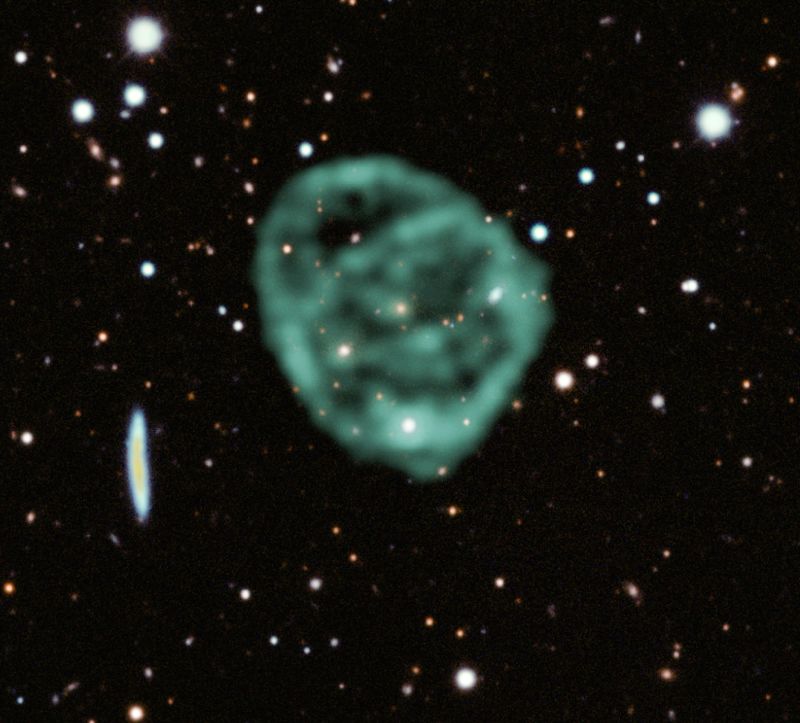
Water Vapor Discovered on a Small Exoplanet

Astronomers using the Hubble Space Telescope have made a groundbreaking discovery of water vapor in the atmosphere of a small exoplanet, marking a significant step in the study of exoplanetary atmospheres and the search for life beyond Earth.
The Discovery
In a landmark discovery, astronomers using the Hubble Space Telescope have detected water molecules in the atmosphere of a small, scorching-hot exoplanet located 97 light-years from Earth. The planet, named GJ 9827d, is about twice the size of Earth and is now the smallest exoplanet known to have water vapor in its atmosphere. This groundbreaking finding was published in The Astrophysical Journal Letters and has opened new avenues for understanding the atmospheres of planets beyond our solar system.
Data from SARAO's MeerKAT radio telescope data (green) showing the odd radio circles, is overlaid on optical and near infra-red data from the Dark Energy Survey.
While the presence of water vapor on the exoplanet is an exciting development, the planet's searing temperatures make it highly unlikely to support life. With temperatures reaching 800 degrees Fahrenheit, the water-rich atmosphere of GJ 9827d would be transformed into scorching steam, rendering it inhospitable for any form of life. Despite this, the discovery is a significant step forward in characterizing Earth-like worlds and understanding the diversity of atmospheres on rocky planets.
Uncovering the Nature of the Atmosphere
The discovery of water vapor on GJ 9827d has raised questions about the true nature of the planet's atmosphere. Astronomers are working to determine whether the water vapor traces are within a hydrogen-rich atmosphere or if the planet has a water-rich atmosphere due to the evaporation of its original hydrogen and helium atmosphere by the host star. The research team's observing program was specifically designed to detect and study the molecules in the planet's atmosphere, with a focus on identifying water vapor. This investigation is a crucial step in understanding the prevalence and diversity of atmospheres on rocky planets around other stars.
During their observations, astronomers studied GJ 9827d during 11 transits, measuring the signature of water molecules by analyzing starlight filtering through the planet's atmosphere. This detailed analysis has provided valuable insights into the composition and characteristics of the exoplanet's atmosphere, shedding light on its unique features and properties.
The Quest for Understanding
The detection of water vapor on GJ 9827d marks a significant milestone in the search for water in space, as water is one of the most common molecules found across the universe. This discovery not only provides valuable information about the exoplanet's atmosphere but also serves as a gateway to further exploration and study of similar planets. The findings from the Hubble Space Telescope have paved the way for future observations by the James Webb Space Telescope, which is expected to provide additional infrared observations, including the detection of carbon-bearing molecules like carbon monoxide, carbon dioxide, and methane.
By understanding the elements present in the atmospheres of exoplanets, astronomers can compare them to the stars they orbit and gain insights into the formation and evolution of these distant worlds. The ongoing quest for understanding the nature of exoplanetary atmospheres holds the promise of uncovering new insights into the diversity of planets beyond our solar system and the potential for habitability in the cosmos.










